Master Dog Commands: Essential Training Tips
DR
Essential Dog Commands Every Owner Should Know
Master essential dog commands to enhance safety and strengthen bonds with your pet. Discover training tips and key commands every owner should know.
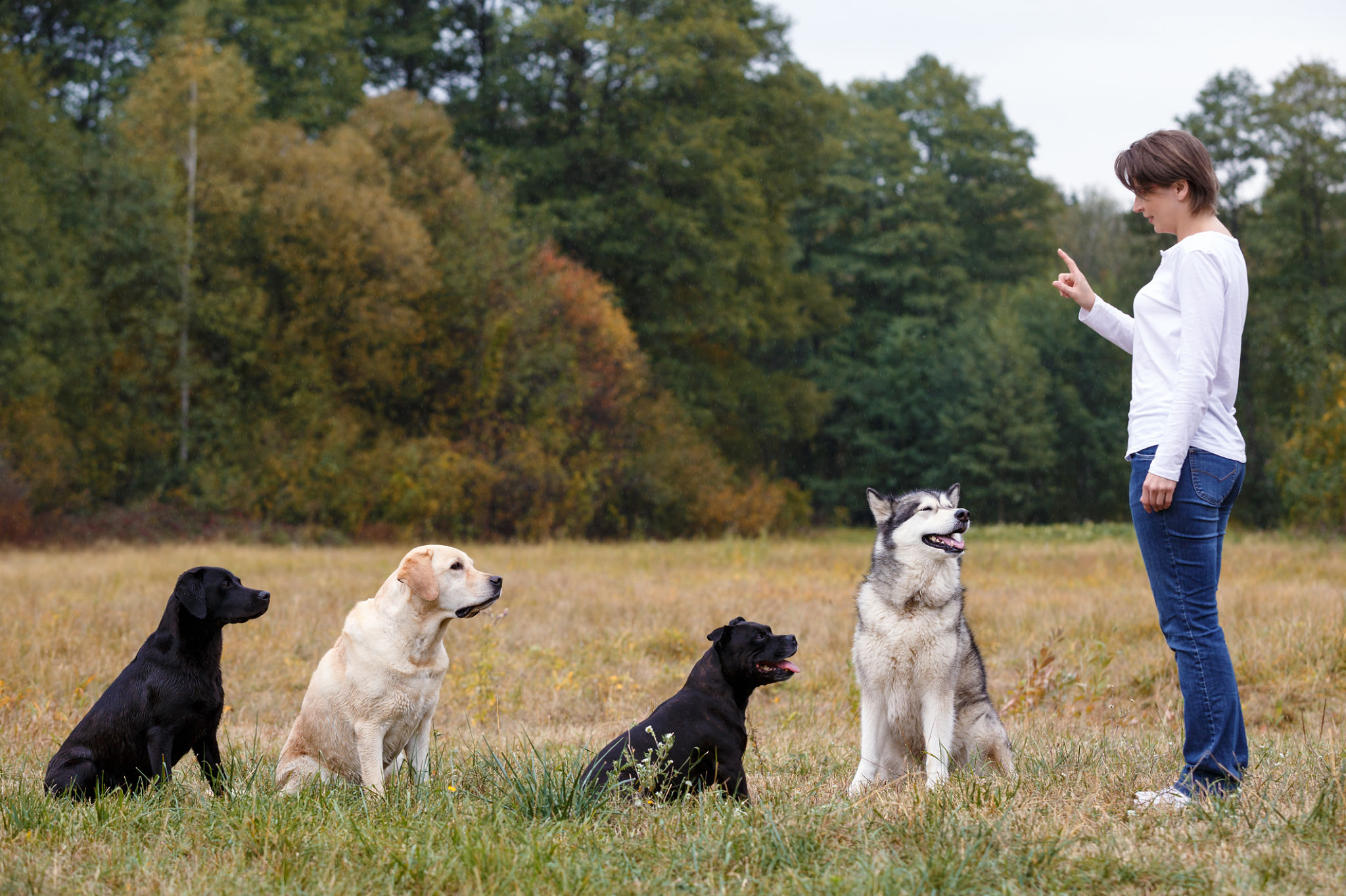
Training your dog is an integral part of responsible pet ownership. It not only ensures your pet's safety but also strengthens the bond between you and your furry friend. Dogs thrive on interaction and learning, and by teaching them basic commands, you establish a foundation for good behavior and effective communication. In this article, we'll explore the essential dog commands every owner should know and provide insights on how to implement them effectively to cultivate a harmonious relationship with your canine companion.
Basic dog commands are more than just tricks. They are vital tools for managing your dog's behavior and ensuring their safety. Commands can prevent your dog from running into traffic, jumping on guests, or engaging in other undesirable behaviors. Moreover, training your dog can be a rewarding experience that enhances your relationship with your pet, fostering trust and understanding.
Commands serve as a universal language between you and your dog, allowing you to convey expectations clearly. This understanding reduces stress for both the pet and the owner, creating a more peaceful environment. Furthermore, a well-trained dog can adapt to new situations more easily, making travel and social interactions more enjoyable. The foundation laid by these commands can be built upon with more advanced training, further enriching your dog's life and capabilities.
The Importance of Consistency
Consistency is key when it comes to training your dog. Dogs thrive on routine and clear expectations. When commands are used consistently, your dog learns to understand what is expected of them. Consistent training also helps reinforce positive behavior and minimizes confusion, setting clear boundaries for acceptable behavior.
Consistency also extends beyond verbal commands; it involves maintaining the same tone of voice, body language, and rewards. This uniformity helps solidify the command in your dog’s mind, creating a reliable response. Inconsistencies, on the other hand, can lead to mixed signals, resulting in a frustrated pet and owner. Therefore, committing to a consistent training approach will yield more effective and lasting results.
When to Start Teaching Puppy Commands
It's never too early to start training your puppy. In fact, the earlier you start, the better. Puppies are like sponges, eager to learn and adapt. You can begin teaching simple commands as soon as you bring your puppy home. Early training sets the stage for a well-behaved adult dog and helps establish your role as a leader.
Starting early can also prevent the development of bad habits. Puppies are naturally curious and may explore behaviors that are undesirable or unsafe. Early intervention through training can redirect this curiosity into positive learning experiences. Moreover, early training sessions are an excellent opportunity for socialization, helping your puppy to grow into a well-adjusted adult dog that is comfortable in various environments.
Best Commands to Teach Your Puppy First
When starting with a young puppy, focus on simple commands that are easy to understand and execute. Here are some of the best commands to teach your puppy first:
1. Sit
"Sit" is one of the most fundamental commands and serves as the building block for other commands. It helps your dog learn impulse control and is a great way to manage excited behavior. Mastering "sit" can also make daily activities like feeding or leash attachment more orderly and stress-free.
Teaching "sit" can also serve as a calming cue for your puppy. When your dog knows to sit upon command, it can help defuse situations where excitement or anxiety might otherwise take over. This command is often the first step in teaching more complex behaviors, as sitting is a natural position for dogs to transition into other commands like "stay" and "lie down."
2. Stay
The "stay" command teaches your dog patience and stability. It can be useful in various situations, such as when you need your dog to remain calm or wait at a distance. This command is particularly helpful during outdoor activities where controlling your dog's movement is necessary for safety.
"Stay" is also crucial for developing your dog's self-control. Practicing this command in different environments and gradually increasing the duration helps your dog learn to manage their impulses. It is a vital skill for ensuring your dog's safety, especially in situations where immediate obedience is required to prevent accidents or injuries.
3. Come
"Come" is a crucial command for ensuring your dog's safety. It allows you to call your dog back to you, preventing them from getting into dangerous situations. This command is essential in emergency situations, such as when your dog is off-leash or near potential hazards.
A reliable "come" command can also enhance your dog's freedom and enjoyment during playtime. Knowing they will return when called allows you to give them more space to explore safely. Reinforcing this command with positive experiences, such as treats or praise upon return, encourages your dog to respond promptly and happily.
How to Train a Young Puppy
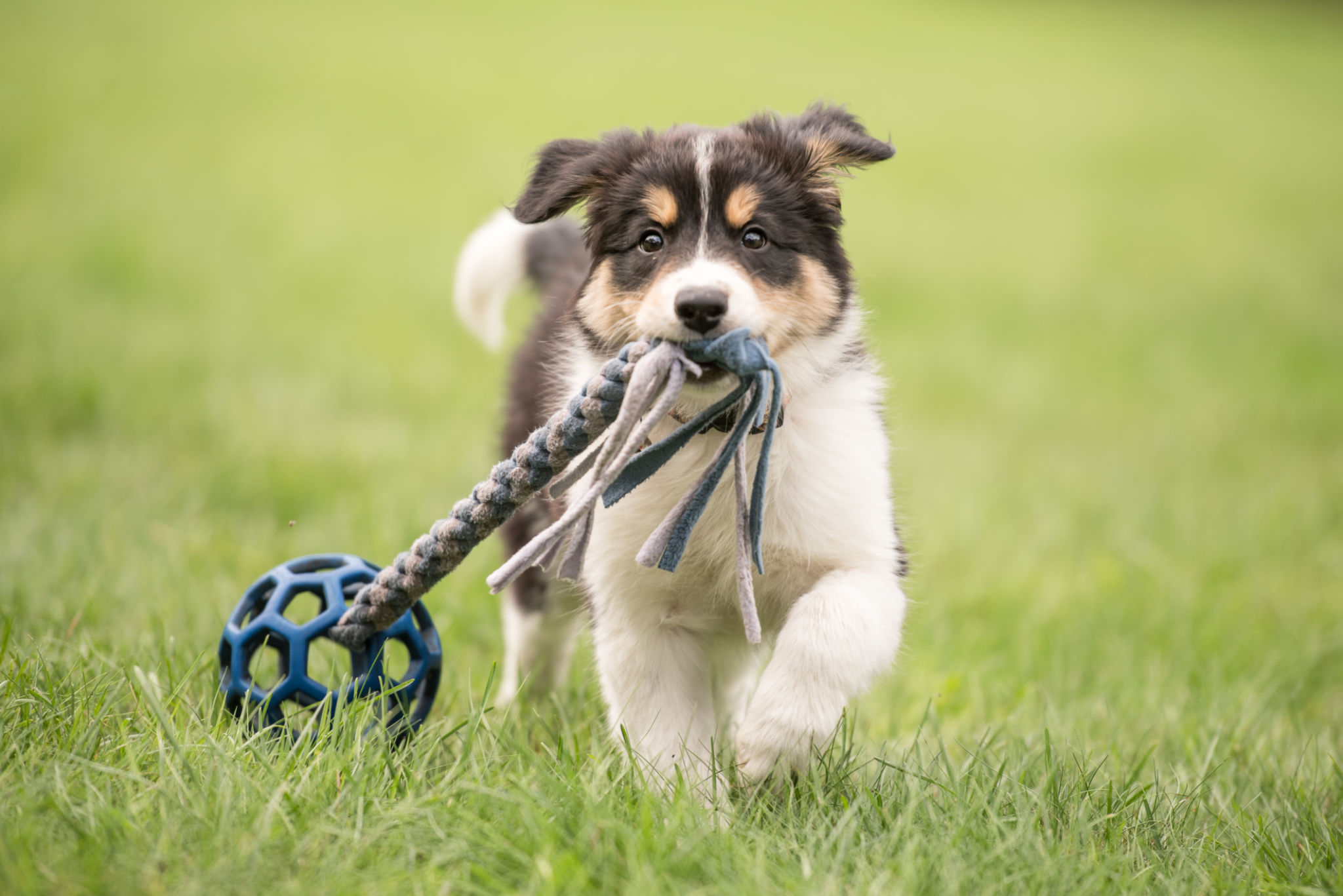
Training a young puppy requires patience, positive reinforcement, and short, frequent training sessions. Puppies have short attention spans, so keep sessions brief and engaging. Use treats, praise, and play as rewards to motivate your puppy and make training enjoyable. The goal is to create a positive association with learning, encouraging your puppy to look forward to training sessions.
Incorporating play into training helps maintain your puppy's interest and energy levels. Puppies are naturally playful, and blending fun with instruction helps reinforce learning without overwhelming them. Regular, short training sessions throughout the day can be more effective than longer, infrequent ones, allowing your puppy to absorb information without becoming fatigued or bored.
List of Dog Commands: What to Teach Your Dog
As your puppy grows, you can expand their training repertoire with additional commands. Here's a list of essential dog commands every owner should consider teaching:
4. Down
The "down" command instructs your dog to lie down. It's useful for calming your dog and can be a stepping stone to more advanced commands. Lying down is a submissive position, which can help manage overexcited or aggressive behavior.
Practicing "down" regularly can help your dog learn to relax and settle in various environments. It is particularly useful during long waits or when guests visit, providing your dog with a comfortable position to rest. As with other commands, reinforcing "down" with treats and praise will encourage your dog to comply willingly and happily.
5. Leave It
"Leave it" is a valuable command for preventing your dog from picking up or engaging with potentially harmful objects. It's a great tool for managing curiosity and ensuring safety. This command is essential for keeping your dog safe from ingesting harmful items or substances.
Teaching "leave it" can also help manage your dog's impulse control. By practicing this command consistently, your dog learns to trust your guidance and avoid temptations. It can be particularly beneficial during walks or in environments where your dog might encounter unfamiliar or dangerous objects.
6. Drop It
The "drop it" command is essential for getting your dog to release objects they shouldn't have. It's particularly useful for preventing your dog from chewing on or swallowing dangerous items. This command can be a lifesaver in situations where your dog picks up something harmful or valuable.
"Drop it" is also crucial for managing playtime, allowing you to take control of toys without conflict. Reinforcing this command with positive reinforcement teaches your dog that releasing items leads to rewards, making them more likely to comply willingly. Consistent practice will help your dog learn to release objects on command in various situations.
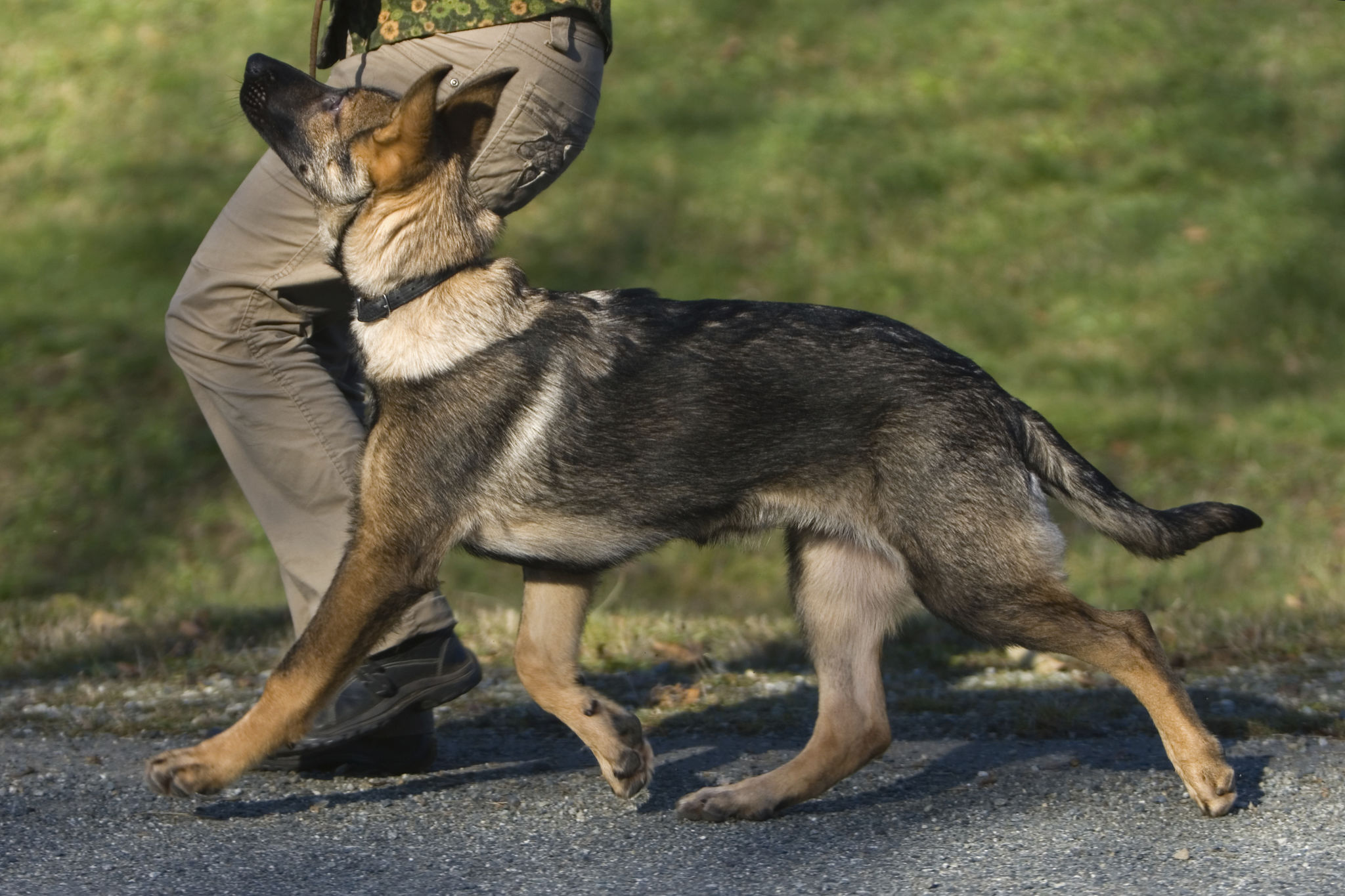
7. Heel
"Heel" teaches your dog to walk calmly by your side without pulling on the leash. It's important for safe and enjoyable walks. A well-behaved dog on a leash makes outdoor excursions more pleasant and less stressful for both the dog and owner.
Teaching "heel" requires patience and consistency, especially for dogs with high energy levels or strong prey drives. Gradually increasing the duration and difficulty of walks helps reinforce this command, making it a reliable tool for managing your dog's behavior in public spaces. A well-executed "heel" command can transform your walking experience, making it a joyful activity for both of you.
8. Off
The "off" command helps prevent jumping on people or furniture. It's a polite way to manage your dog's behavior around guests and in the home. This command teaches your dog respect for personal space and boundaries, which is crucial for maintaining harmony in shared living spaces.
Consistently using the "off" command helps prevent unwanted behaviors from becoming habits. Reinforcing this command with positive interactions encourages your dog to follow your instructions willingly. Over time, your dog will learn to greet people and interact with their environment in a more controlled and respectful manner.
9. Wait
The "wait" command is similar to "stay" but with more flexibility. It instructs your dog to pause before proceeding, such as waiting before crossing a street or entering a door. This command is particularly useful for managing your dog's behavior in dynamic environments.
"Wait" can also be used to control your dog's excitement during activities like feeding or playtime. By practicing this command regularly, your dog learns to anticipate your cues and follow your lead. This skill is invaluable for maintaining order and safety in various situations, making it a versatile addition to your training repertoire.
10. No
The "no" command is a general corrective command used to indicate unwanted behavior. It's important to use it sparingly and in conjunction with redirection to teach your dog what they should do instead. Overusing "no" can lead to confusion and stress, so it's crucial to pair it with positive guidance.
Incorporating "no" into your training should focus on helping your dog understand boundaries without fear or anxiety. By immediately redirecting your dog's behavior to a positive alternative, you reinforce what is expected, building a more comprehensive understanding of acceptable actions. This balanced approach helps maintain trust and a positive relationship between you and your dog.
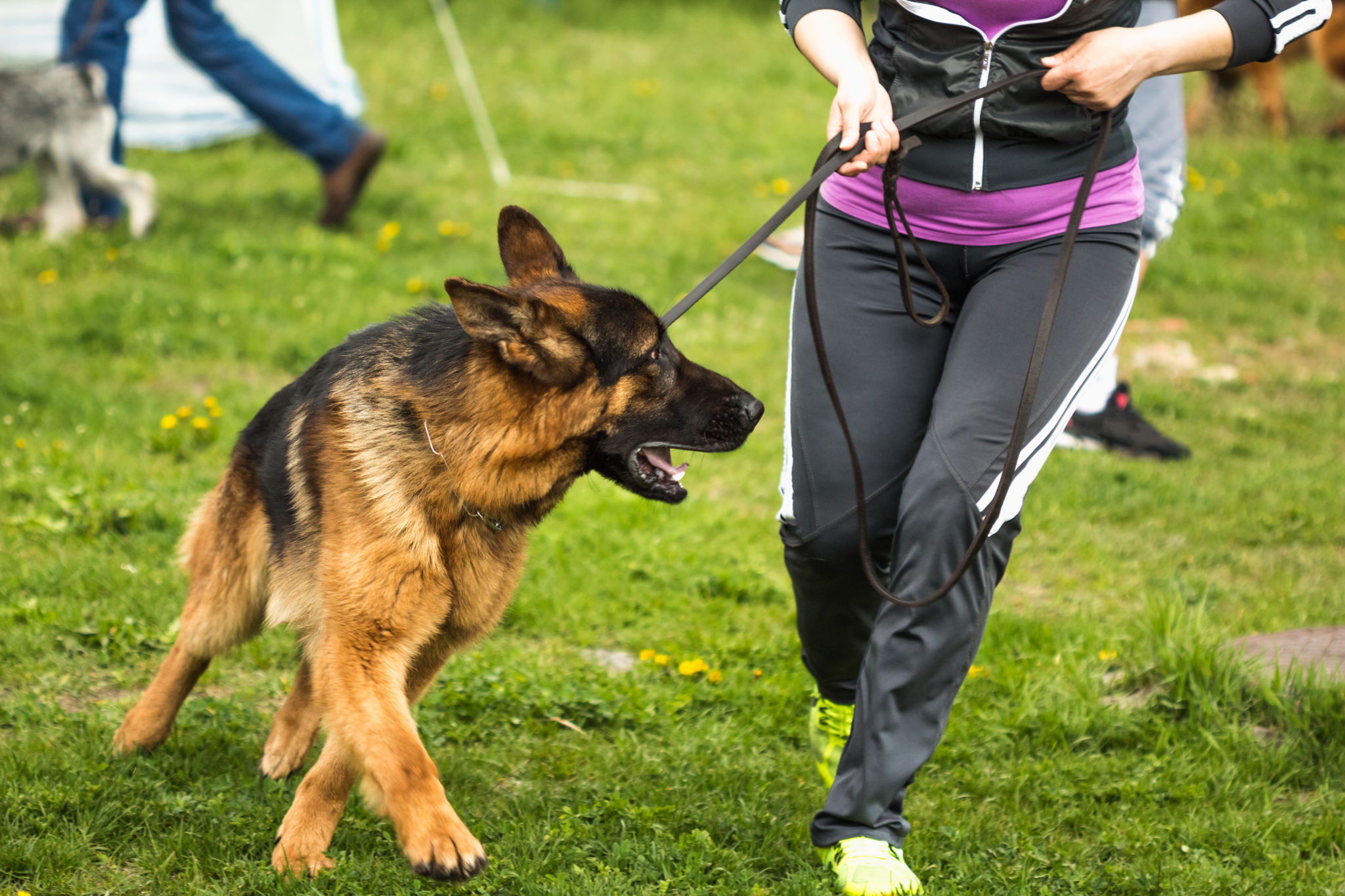
Incorporating German Commands for Dogs
For those interested in diversifying their dog's command vocabulary, incorporating German commands can be an interesting option. Many professional trainers use German commands due to their distinct sounds, which are easy for dogs to differentiate. Some common German commands include:
- Sitz (Sit)
- Platz (Down)
- Bleib (Stay)
- Hier (Come)
- Aus (Drop It)
Benefits of Using German Commands
Using German commands can be beneficial in multi-dog households where dogs may get confused by similar-sounding English commands. It can also be useful for advanced training and competitions, offering a unique layer of communication. This approach can be advantageous in public settings, where distinct commands help prevent confusion with other owners' instructions.
Incorporating a second language can also enhance mental stimulation for your dog, providing an engaging challenge. It offers an opportunity to deepen your connection through shared learning experiences and can be a fun way to demonstrate your dog's skills to friends and family. Whether for practical reasons or personal interest, using German commands can enrich your dog's training experience.
Tips for Successful Dog Training
Positive Reinforcement
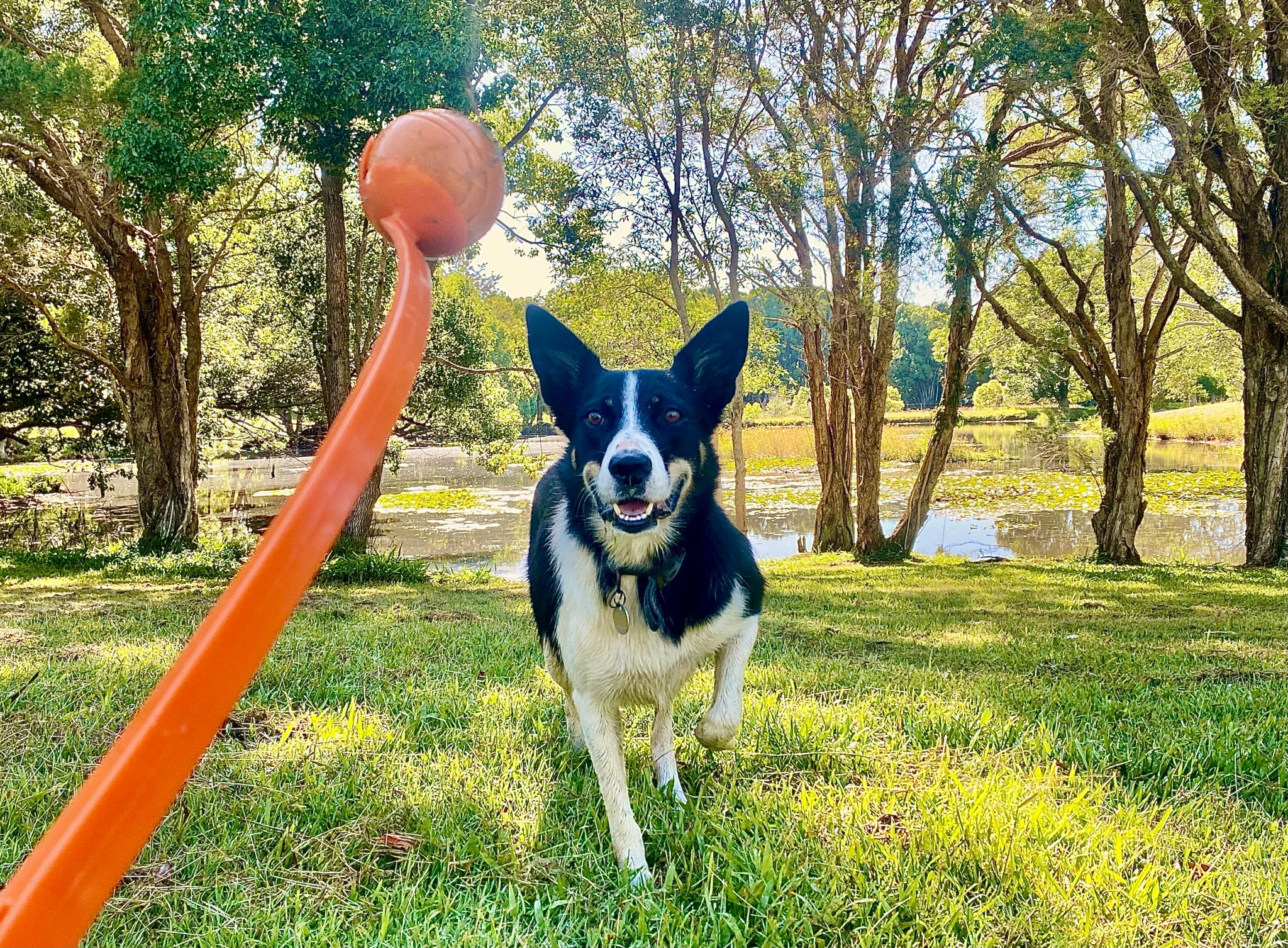
Positive reinforcement is the most effective method for training dogs. Reward your dog with treats, praise, and affection when they successfully follow a command. This encourages them to repeat the behavior, creating a cycle of positive learning experiences. Positive reinforcement builds trust and makes training a rewarding activity for both you and your dog.
Consistency in rewarding desired behaviors helps solidify the connection between command and action. Over time, your dog will naturally gravitate towards behaviors that yield positive outcomes. This approach fosters a happy and confident dog, eager to learn and please.
Be Patient and Consistent
Training takes time, and every dog learns at their own pace. Be patient and consistent, and avoid getting frustrated if progress seems slow. Celebrate small victories and continue practicing regularly. Consistent effort and patience will yield lasting results, fostering a strong bond between you and your dog.
Remember that setbacks are a natural part of the learning process. Each dog is unique, and some commands may take longer to master than others. By maintaining a positive attitude and adjusting your approach as needed, you can overcome challenges and help your dog reach their full potential.
Make Training Fun
Keep training sessions fun and engaging. Use games, toys, and playful interactions to maintain your dog's interest and motivation. A playful approach to training helps your dog associate learning with positive experiences, encouraging them to participate eagerly.
Incorporating play into training also strengthens your bond, making learning a shared adventure. By varying activities and rewards, you can keep sessions fresh and exciting, preventing boredom. This dynamic approach will keep your dog enthusiastic about training and eager to learn new skills.
Seek Professional Help If Needed
If you're struggling with training or facing specific behavioral challenges, don't hesitate to seek the help of a professional dog trainer. They can provide personalized guidance and support, helping you address issues effectively. Professional trainers can offer valuable insights and techniques tailored to your dog's unique needs.
Seeking professional assistance can also provide peace of mind, ensuring that you are on the right track with your training efforts. With expert guidance, you can overcome obstacles and achieve your training goals, leading to a more harmonious relationship with your dog.
Conclusion
Teaching your dog basic commands is an essential part of pet ownership. It ensures safety, enhances communication, and strengthens the bond between you and your furry friend. By starting with basic commands and gradually expanding your dog's training, you set the foundation for a well-behaved and happy companion. Remember, training should be a positive and enjoyable experience for both you and your dog. Happy training!
Keywords:
basic dog commands, basic dog training commands, what to train your puppy first, dog obedience commands, basic puppy training, things to teach your dog, dog commands, dog training words, dog training commands list, list of dog commands, things to train your dog, puppy training essentials, when to start teaching puppy commands, best commands to teach your dog, basic puppy commands, puppy commands, common dog commands, commands to teach your dog, good commands for dogs, best dog commands, puppy training words, simple dog commands, what are the 10 basic dog commands, puppy training commands, dog obeying commands, dog training commands, german commands for dog, obedience training commands, commands to teach puppy, how to train a young puppy, puppy training commands list
